There has been a growing trend of consumer interest in products that are marketed as “natural,” “environmentally friendly,” “healthy,” and “humanely raised.” Producers often use labels, terms, and certifications to verify that their products are indeed grown or produced in ways that align with consumer preferences. There are many such labels and certifications, and the variety often creates confusion. This publication provides a brief description of the most commonly used labels and certifications to help consumers understand what a particular label or certification means and to help them make more informed choices.
Labels are intended to help consumers differentiate between otherwise similar products. Some labels can only be used by producers or processors that adhere to specific guidelines that are verified by a third party. This process is called certification. There are three main purposes of labeling: to inform, to protect, and to persuade consumers. The regulation of food labeling in the United States has served to reduce risks to individual consumers’ health and safety, to increase consumers’ access to information, and to ensure fair competition among producers. There are, however, many other reasons that labels and certifications may be used, including identification of how the food was processed, how it was grown, its health or nutritional benefits, or its superior quality (in freshness, taste, etc.).
Label terms and certifications can generally be divided into those that are regulated, and those that are unregulated. The United States Department of Agriculture (USDA) or the Food and Drug Administration(FDA) usually define regulated label terms and certifications that apply to food and food products. The use of USDA- or FDA-approved labels and certifications is governed by law, and violations of use can have legal consequences. Within the USDA, the Food Safety and Inspection Service (FSIS) is the agency responsible for the truthful labeling of meat and poultry products. Due to this role, FSIS must approve any term, both regulated and unregulated, appearing on meat and poultry labels.
Unregulated terms may have generally accepted definitions but do not have legal ramifications or government verification. Many of these terms have standards and require third party verification. Some common label claims—such as “humanely raised” or “sustainably farmed”—refer to production practices for crops and livestock, but there are no USDA or FDA definitions for these terms. This circular describes common regulated and unregulated terms used in marketing food products.
Regulated Labels
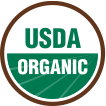
The term “organic” and the use of the USDA organic seal are regulated through the National Organic Program (NOP). The NOP regulates farmers, ranchers, and food processors who are certified organic in the United States. Producers who use the“organic” term and brand must adhere to the standards created by the NOP to become and maintain organic-certified. These organic standards cover soil and water quality, pest management, livestock practices, and rules for food additives. According to the NOP, organic practices support the cycling of on-farm resources, promote ecological balance, and conserve biodiversity. These practices are aimed at maintaining or
enhancing soil and water quality as well as conserving wetlands, woodlands, and wildlife. The NOP website provides lists of approved pesticides, fertilizers, and acceptable farm materials, both synthetically derived and non-synthetically derived, which are allowed in organic production. The use of synthetic fertilizers, synthetic pesticides, sewage sludge, irradiation, and genetically engineered crops are prohibited.
Producers must follow organic standards to become or remain certified. If the history of the land is unknown, organic practices must be adopted for three years before full certification is possible. During this time, the producer will be considered “in transition.” According to the NOP standards, the certification process begins with a producer preparing an “Organic Systems Plan” with the appropriate documentation related to farm production and management. The organic certification process involves an annual farm inspection and is conducted by the certifying agency. There is a fee for certification, which is based on the amount of land being certified and other factors. The Georgia Department of Agriculture certifies independent agencies to conduct organic inspections and certifications. There is currently one organic certifying agency located in the state of Georgia, the Georgia Crop Improvement Association. There are 16 additional certifying agents in other states that are registered with the Georgia Department of Agriculture. Small farms with annual revenues under $5,000 in organic products are exempt from the organic certification process, but they must comply with the applicable organic production, handling, and labeling requirements. These farms may label their items as organic but can not use the USDA certified organic seal.
For any processed food products such as meat, cheese, jams, and frozen vegetables, the processing facility, as well as the producer, must be certified organic. The USDA has approved the use of four levels of terminology concerning the use of the word “organic” on food labels:
-
100% Organic: Products with this label contain all organic ingredients (exclusive of water and salt) and are certified to use the USDA organic seal as well as the 100% organic claim on the front panel of the packaging. This designation is often used with raw or unprocessed items or value-added products that have no additional ingredients. Organic ingredients must be identified in the label information panel.
-
Organic: Products with this label contain a minimum of 95% organic ingredients (exclusive of water and salt) and are certified to use the USDA organic seal as well as the organic claim on the front panel of the packaging. Organic ingredients must be identified in the label information panel.
-
Made with Organic: Products with this label contain at least 70% organic ingredients (exclusive of water and salt). The front panel of the packaging may state “made with organic (insert up to three ingredients or ingredient categories)” but cannot use the USDA organic seal or represent the finished product as organic. The label cannot only state that it’s “made with organic ingredients.” Organic ingredients must be identified in the label information panel.
-
Specific Ingredient Listing: Products with this label contain less than 70% organic ingredients and can not use the USDA organic seal or the word “organic” on the front panel of the packaging. Organic ingredients and the total percentage of organic ingredients may be listed in the ingredients section of the information panel.
No Hormones Added (pork or poultry): The FDA prohibits the use of artificial or added steroid hormones in the production of any dairy cows, veal, pork, and poultry in the U.S. Because of this, all pork and poultry can be labeled “raised without hormones” or a similar phrase. If the label states “no hormones added” then there must also be a statement that says, “Federal regulations prohibit the use of hormones.” Companies sometimes use this label to differentiate their product from others. This can be somewhat misleading because no additional hormones are allowed for use in the production of pork or poultry in the U.S.
No Hormones Administered (beef and dairy): The term “no hormones administered” may be approved for use on the label of beef products if the producer provides sufficient documentation to the USDA FSIS showing that no additional synthetic hormones have been used in raising the animals. Additional hormones are commonly used in commercial beef production to increase growth. Additional hormones can also be used in dairy production to increase milk production. Dairy products labeled “rBST/rBGH free” contain milk from cows who have not been given hormones. The USDA is responsible for proper use of this label, but there is no independent third-party verification system in place.
No Hormones Administered (sheep and goats): USDA FSIS states that no hormones can be used in the production of goat. The FDA has approved steroid hormone use in sheep production. The term “no hormones administered” may be approved for use on the label of sheep products if the producer provides sufficient documentation is provided to the USDA FSIS showing that no additional synthetic hormones have been used in raising the animals.
Cage-Free (eggs): According to the USDA Agricultural Marketing Service (AMS) website, “Eggs packed in USDA grade-marked consumer packages labeled as cage-free must be produced by hens housed in a building, room, or enclosed area that allows for unlimited access to food, water, and provides the freedom to roam within the area during the laying cycle.” A cage-free environment does not mean the birds are necessarily healthier. Some studies have shown that birds raised in cage-free or free-range environments tend to have a higher mortality rate than birds raised in cages.
Free Range Poultry (eggs and meat): For producers to use the term “free-range” or “free-roaming,” they must demonstrate to the USDA that the poultry are allowed all accommodations of cage-free birds in addition to access to the outside. The outdoor area may be fenced and/or covered with a “netting-like material.” The type of outdoor access, size of the outdoor space, and length of time the birds have outdoor access are not legally defined, so conditions may vary greatly between facilities.
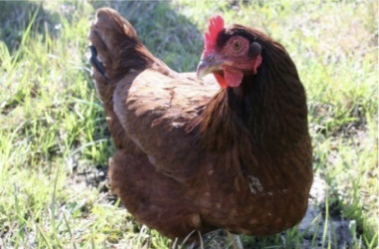
Grass-Fed: Until recently, there were federal standards for this marketing claim governed by AMS. However, in 2016, the USDA determined that AMS was not a regulatory agency and should not be involved in associated labeling claims. There are now four companies with a USDA Process Verified Program (PVP) that evaluate the “grass-fed” claim of those who wish to use this on their product labels. Separately, FSIS allows the use of the term“grass-fed” on labeling with a signed affidavit from the producer or company defining what “grass-fed” means in that specific operation. According to FSIS, “100% grass-fed” means that animals were 100% grass or forage-fed after being weaned from their mother’s milk. On a product labeled as “grass-fed,” it should be understood as100% grass-fed unless a percentage is listed beside the term.
Natural/All Natural: The dictionary definition for natural is “existing in or caused by nature; not made or caused by humankind.” The FDA has not developed a legal definition for use of the term “natural” or its derivatives in products under its regulation. However, the FDA generally considers the term to mean that All animals and humans naturally produce hormones, including estrogen, progesterone, and testosterone. These hormones are needed for healthy growth and reproduction. Hormone labels refer to additional synthetic or steroid hormones given to animals to increase growth, feed efficiency, or reproduction. “nothing artificial or synthetic (including all color additives regardless of source) has been included in, or has been added to, a food that would not normally be expected to be in that food.” The FDA does not consider the term to apply to production, processing or manufacturing methods, and the FDA does not consider whether the term describes nutritional or health benefits.
The USDA FSIS, which only deals with meat and poultry products, does have a defined “natural” labeling term for meat and poultry products: “A product containing no artificial ingredients or added color and is only minimally processed. Minimal processing means that the product was processed in a manner that does not fundamentally alter the product.” The FDA does not object to the use of the term if the food does not contain added color, artificial flavors, or synthetic substances. In reference to meat, the term only applies to how the meat is processed after slaughter, not how the animal was raised. To learn more, visit the FDA Food Labeling website.
The “natural” term, in particular, is confusing to consumers because many companies add additional production requirements to that organization’s natural program. Examples of this include hormone-free or grass-fed. These company-specific factors beyond USDA FSIS regulations mean that the term “natural” may not be the same from company to company.
Nongovernmental (Private) Labels
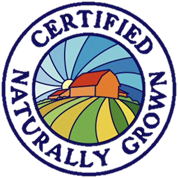
Certified Naturally Grown (CNG) is a nonprofit organization that offers peer-review inspections followed by certifications for produce, mushroom, aquaponics, and livestock farmers as well as beekeepers. The CNG standards are very similar to those for USDA-certified organic. CNG farmers are prohibited from using synthetic fertilizers, pesticides, herbicides, or GMOs, as with certified organic farmers. The main difference between CNG and organic is that the CNG certification model relies on peer inspections rather than requiring inspections by a USDA-approved certifying agency. The inspection is conducted annually and producers are expected to serve as inspectors of other CNG farms. The certification process includes membership dues, declaration, inspection, and record keeping. There are currently CNG farmers and beekeepers in 48 states and four Canadian provinces. For more, visit www.naturallygrown.org.
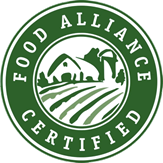
Food Alliance is a nonprofit organization that certifies farms, ranchers, food processors, and distributors for sustainable agriculture and facility management practices. This organization developed sustainability criteria for a wide range of agricultural products, including fruits, vegetables, grains, livestock, eggs, dairy, shellfish, mushrooms, grains, legumes, horticultural products, and prepared food products made with Food Alliance-certified ingredients. Food Alliance-certified products contain no genetically modified crops or livestock, no artificial flavors, colors, or preservatives and have a verified supply chain traceability. They also certify healthy and humane care for livestock. Growth promotants or subtherapeutic antibiotics are not allowed with this certification. Food Alliance-certified producers are required to provide safe and fair working conditions, practice integrated pest management, and conserve soil and water resources. For more about Food Alliance, visit foodalliance.org/.
Real Organic Project is a nonprofit group that has created an add-on label program for farmers in addition to the USDA organic certification program. All farms that are certified as part of the Real Organic project must meet USDA organic standards and also meet additional standards for livestock, crops, processed products, and hired labor. Two significant requirements are that all crops must be grown in the soil and not hydroponically, and all livestock must be raised on pasture. For more about the Real Organic Project, visit www.realorganicproject.org/the-real-organic-difference/.
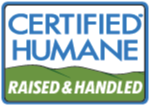
Certified Humane: Humane Farm Animal Care (HFAC) is a nonprofit certification organization. Products with this label come from a facility that meets their standards for farm animal treatment from birth through slaughter. These animals are raised with a nutritious diet and have access to shelter, resting areas, and sufficient space. They are allowed the ability to engage in natural behaviors and animals are raised without the use of antibiotics. There are annual inspections of all farms, ranches, and slaughter facilities in the program. Those who are certified are allowed to use the Certified Humane label on their products. For more about Certified Humane, visit certifiedhumane.org/.
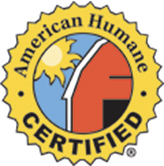
The American Humane Certified standards were built upon the values of the “Five Freedoms” (healthy, comfortable, well-nourished, safe, able to express normal behavior, and free from unpleasant states such as pain, fear, and distress), as created by the Royal Society for the Prevention of Cruelty to Animals, as well as input from animal science experts, veterinarians, and other animal husbandry specialists. The American Humane Certified Scientific Advisory Committee reviews the standards regularly. The program is a voluntary, third-party audit process open to producers of any kind who meet the American Humane Certified standards of raising and handling their animals. Those who are certified are permitted to use the American Humane Certified label on their products. For more about American Humane, visit www.americanhumane.org/humane-heartland/.
Biodynamic refers to farming practices that use the principle that the farm is a living organism that is self-sustaining with minimal external inputs. Biodynamic farming is a holistic approach that requires entire farms to be certified, not just production fields. Farms also have to set aside a portion of land to enhance biodiversity. The Biodynamic label and certification is carried out by the Demeter Association. More information can be found at www.demeter-usa.org.
Unregulated Terms
The following terms do not have legal or regulated definitions and are not affiliated with any specific nonprofit organization.
Locally Grown: This is a term used to imply that food or agricultural products are produced and then sold within a certain region. This could be defined by state, regional boundaries, or distance. Entities can define “locally grown” for themselves, and there is no third-party verification. Although there is not a legal definition, the USDA Economic Research Services (ERS) says “defining ‘local’ based on marketing arrangements—such as farmers selling directly to the consumer at regional farmers’ markets or to schools—is well recognized.”

Heirloom: Heirloom varieties of fruits and vegetables are traditional or unique plant types that are genetically distinct from commercial varieties. The term “heirloom” does not refer to any specific farming practices and is open to interpretation. Some use the term for varieties that are at least 50 years old and grown before War World II (USDA, 1999). Others prefer to family-saved seeds as “heirlooms.” Heirloom varieties are open-pollinated (pollinated by insects or wind without human intervention), which means that seeds collected one year will produce plants that have most of the characteristics of the parent plant. This is different from hybrid plants that are intentionally cross-pollinated from two different varieties, or species aiming for hybrid offspring containing the best traits of each of the parents. The seed from hybrid plants will not grow true to type, meaning that they will express random characteristics of both parents.
Heritage: The term “heritage” is generally applied to livestock breeds that developed in certain locations and adapted over time to those local environmental conditions. These breeds are not generally used in large-scale animal production. The term “heritage” does not guarantee that animals are raised outdoors on pasture and only refers to the breed of an animal. The USDA does not recognize heritage labels, but there are organizations working to define and codify the term to set precedence and ensure labels that carry the term “heritage” meet certain standards.
Free-Range or Pasture-Raised (animals other than poultry): In the U.S., there is no current legal definition for“free-range” or “pasture-raised” for nonpoultry livestock. Some consumers may assume that free-range sounds like wide-open pastures. However, producers are not required to demonstrate to the USDA that the animals have outside access, the type of outside access, the size of the outdoor lot, or length of time outside. There are no third-party verification processes for this term.
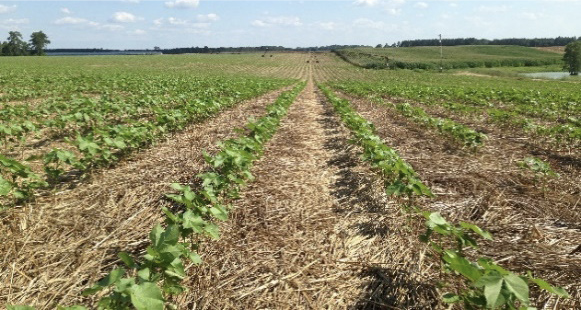
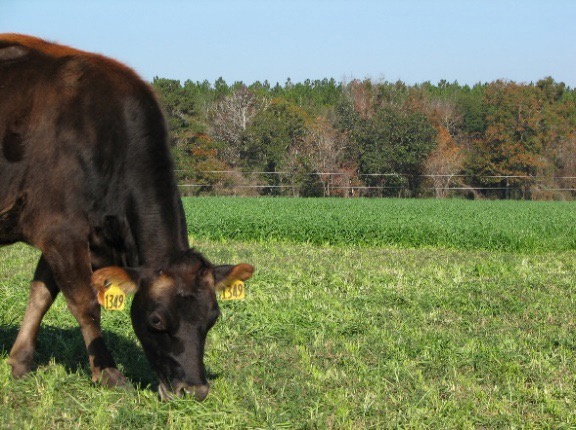
Conventional Agriculture: Many people use the term “conventional agriculture” to refer to agricultural practices that are currently widely used. Conventional agriculture can include the use of synthetic fertilizers, pesticides, herbicides, and other man-made and/or nature-made inputs. Many conventional agriculture producers use genetically modified crops. It should be noted that good agronomic practices within conventional agriculture include crop rotation, cover crops, conservation tillage, managed grazing, and integrated pest management. These practices are part of sustainable agriculture.
Sustainable Agriculture: Sustainable agriculture is a set of production practices that seeks to address the environmental impacts of farming practices, economic viability, and quality of life for farmers and farm workers as well as the rural community. Although the term is unregulated and not legally defined, it was addressed by the U.S. Congress in the 1990 Farm Bill. Under that law, “the term sustainable agriculture means an integrated system of plant and animal production practices having a site-specific application.” This site-specific requirement means that there is no one set of sustainable agriculture practices; however, for a farming system to be sustainable, it must address all three of the areas above. Any product, whether conventionally grown or organically grown, could be labeled with the term sustainable.
Summary
Labels and certifications help to inform customers about the production and processing methods involved in the products that they are purchasing. They can provide a picture of how the vegetables, fruits, nuts, eggs, meat, and dairy were cultivated and raised. This allows the public to better understand how and where their food was produced, helping consumers to make informed choices that align with their personal preferences.
References
USDA. (2016). Conference call on withdrawal of our grass (forage) fed marketing claim standard and naturally raised marketing claim standard. https://www.ams.usda.gov/sites/default/files/media/Grass%20Fed%20Conference%20Call%20Notes%2001%2014%2016.pdf
USDA Agricultural Marketing Service. (n.d.). Organic labeling standards. https://www.ams.usda.gov/grades-standards/organic-labeling-standards
USDA Agricultural Marketing Service. (2015). Introduction to organic practices. https://www.ams.usda.gov/sites/default/files/media/Organic%20Practices%20Factsheet.pdf
USDA Agricultural Marketing Service. (2016). Using the organic seal: Media, marketing & educational materials. https://www.ams.usda.gov/publications/content/using-organic-seal
USDA Agricultural Marketing Service. (2019). Cage-free verification of USDA graded shell eggs. https://www.ams.usda.gov/publications/content/cage-free-verification-usda-graded-shell-eggs
USDA Economic Research Service. (2022). Local foods. https://www.ers.usda.gov/topics/food-markets-prices/local-foods/
USDA Food Safety and Inspection Service. (2016). Labeling and label approval. https://www.fsis.usda.gov/inspection/compliance-guidance/labeling
USDA National Agricultural Library. (1999). Vegetables and fruits: A guide to heirloom varieties and community-based stewardship. https://handle.nal.usda.gov/10113/7114169
U.S. Food and Drug Administration. (2018). Use of the term natural on food labeling. https://www.fda.gov/food/food-labeling-nutrition/use-term-natural-food-labeling
Status and Revision History
Published on May 08, 2018
Published with Minor Revisions on Nov 16, 2023


























































